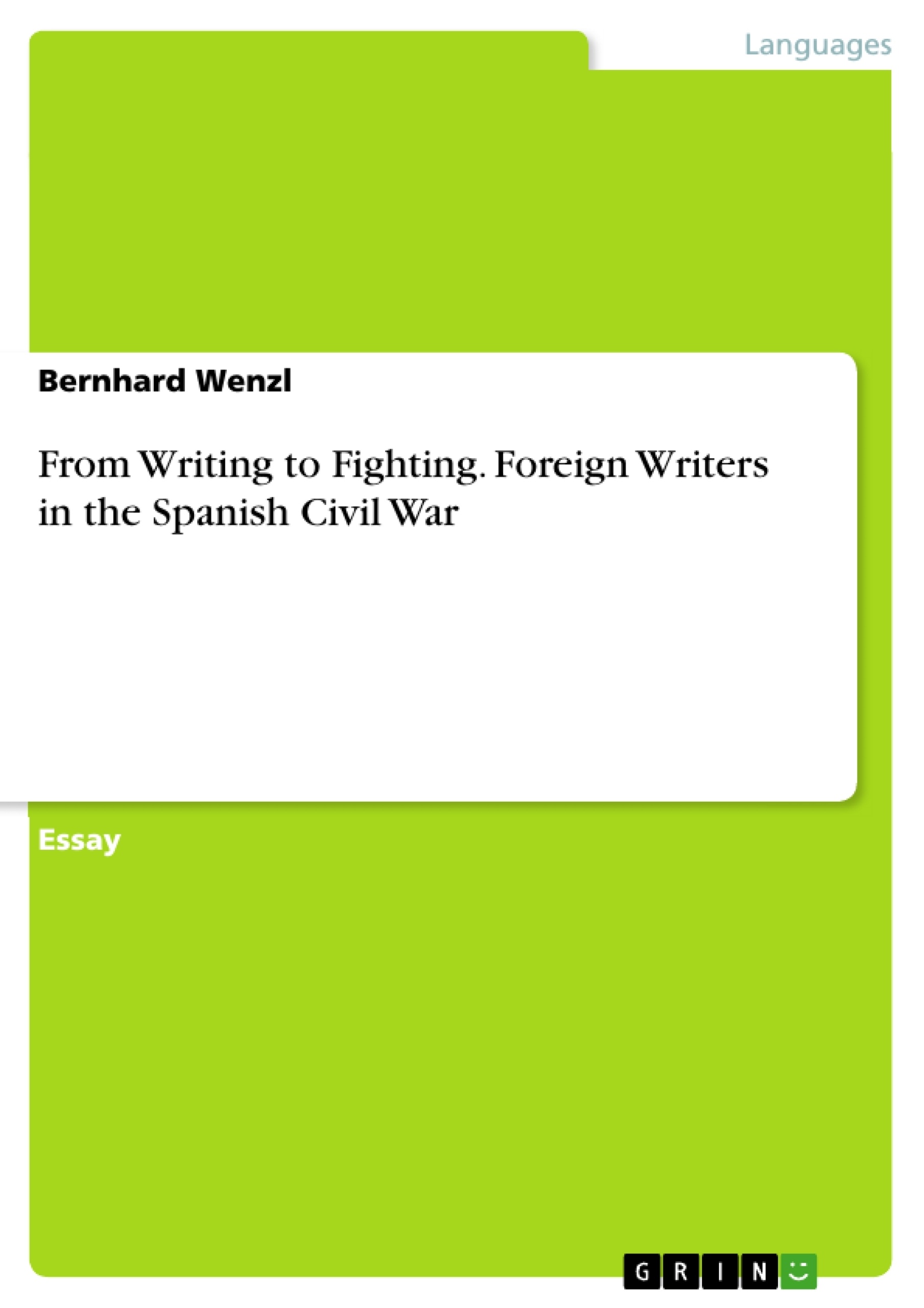The Spanish Civil War has left deep traces on the cultural memory of the anti-fascist movement. One of the reasons is the wealth and breadth of the artistic works produced by supporters of the Spanish Republic during and after the war years. Besides contemporary photographs and films, there are thousands of journalistic and literary documents that keep alive the collective history of the violent attack launched by Franco's Nationalist Army and of the courageous defence organized by the left-wing parties and labour unions in the Republican Government. A considerable amount of these writings came from the pen of foreign authors including George Orwell, Arthur Koestler, André Malraux, and Ernest Hemingway.
From Writing to Fighting. Foreign Writers in the Spanish Civil War

Essay , 2016 , 4 Pages , Grade: 1,0
Autor:in: Mag. Bernhard Wenzl (Author)
Excerpt & Details Look inside the ebook

